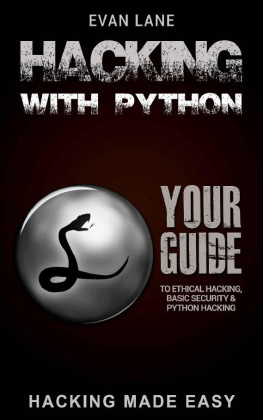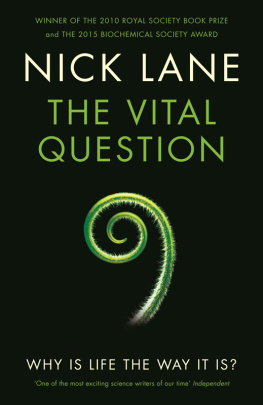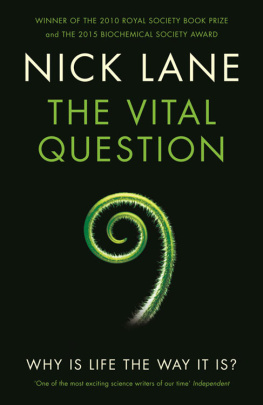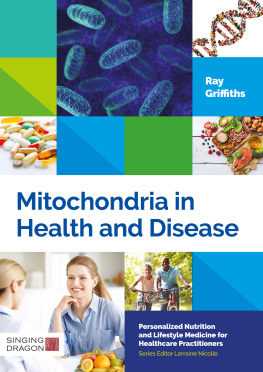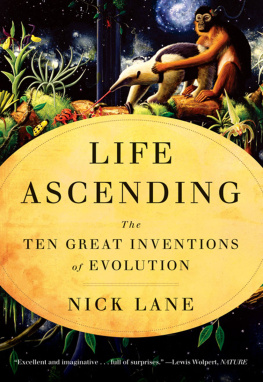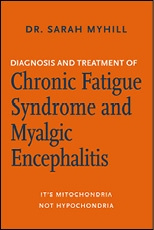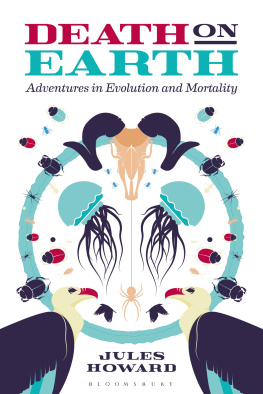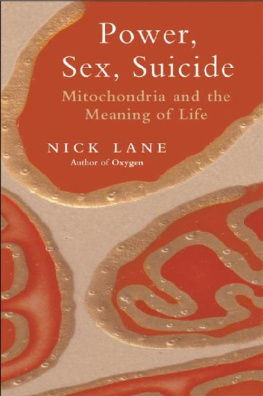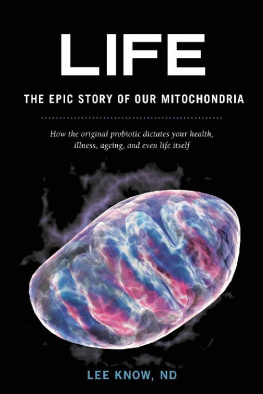Lane - Power, Sex, Suicide
Here you can read online Lane - Power, Sex, Suicide full text of the book (entire story) in english for free. Download pdf and epub, get meaning, cover and reviews about this ebook. year: 2005, publisher: OUP Oxford, genre: Religion. Description of the work, (preface) as well as reviews are available. Best literature library LitArk.com created for fans of good reading and offers a wide selection of genres:
Romance novel
Science fiction
Adventure
Detective
Science
History
Home and family
Prose
Art
Politics
Computer
Non-fiction
Religion
Business
Children
Humor
Choose a favorite category and find really read worthwhile books. Enjoy immersion in the world of imagination, feel the emotions of the characters or learn something new for yourself, make an fascinating discovery.

Power, Sex, Suicide: summary, description and annotation
We offer to read an annotation, description, summary or preface (depends on what the author of the book "Power, Sex, Suicide" wrote himself). If you haven't found the necessary information about the book — write in the comments, we will try to find it.
Power, Sex, Suicide — read online for free the complete book (whole text) full work
Below is the text of the book, divided by pages. System saving the place of the last page read, allows you to conveniently read the book "Power, Sex, Suicide" online for free, without having to search again every time where you left off. Put a bookmark, and you can go to the page where you finished reading at any time.
Font size:
Interval:
Bookmark:
Mitochondria and the Meaning of Life
Mitochondria and the Meaning of Life
NICK LANE


Great Clarendon Street, Oxford 0x2 6 DP
Oxford University Press is a department of the University of Oxford.
It furthers the Universitys objective of excellence in research, scholarship,
and education by publishing worldwide in
Oxford New York
Auckland Cape Town Dar es Salaam Hong Kong Karachi
Kuala Lumpur Madrid Melbourne Mexico City Nairobi
New Delhi Shanghai Taipei Toronto
With offices in
Argentina Austria Brazil Chile Czech Republic France Greece
Guatemala Hungary Italy Japan Poland Portugal Singapore
South Korea Switzerland Thailand Turkey Ukraine Vietnam
Oxford is a registered trade mark of Oxford University Press
in the UK and in certain other countries
Published in the United States
by Oxford University Press Inc., New York
Nick Lane 2005
The moral rights of the author have been asserted
Database right Oxford University Press (maker)
First published 2005
All rights reserved. No part of this publication may be reproduced,
stored in a retrieval system, or transmitted, in any form or by any means,
without the prior permission in writing of Oxford University Press,
or as expressly permitted by law, or under terms agreed with the appropriate
reprographics rights organization. Enquiries concerning reproduction
outside the scope of the above should be sent to the Rights Department,
Oxford University Press, at the address above
You must not circulate this book in any other binding or cover
and you must impose the same condition on any acquirer
British Library Cataloguing in Publication Data
Data available
Library of Congress Cataloging in Publication Data
Data available
Typeset by Footnote Graphics Limited
Printed in Great Britain
on acid-free paper by
Clays Ltd., St. Ives plc
ISBN 0192804812 9780192804815
1 3 5 7 9 10 8 6 4 2
For Ana
And for Eneko
Born, appropriately enough, in
Courtesy of Professor Bland Finlay, F.R.S., Centre for Ecology and
Hydrology, Winfrith Technology Centre, Dorset
Adapted from Martin et al. An overview of endosymbiotic models for the
origins of eukaryotes, their ATP-producing organelles (mitochondria and
hydrogenosomes) and their heterotrophic lifestyle, Biological Chemistry
: 15211539; 2001
From Gogol, E. P., Aggeler, R., Sagerman, M. & Capaldi, R. A., Cryoelectron
microscopy of Escherichia coli F adenosine triphosphatase decorated with
monoclonal antibodies to individual subunits of the complex. Biochemistry
, (1989), 47174724. (1989) American Chemical Society, reprinted with
permission
From Martin, W., and Russell, M. J., On the origins of cells, Philosophical
Transactions of the Royal Society B (2003), 5983
From Mereschkowsky, C., Theorie der zwei Plasmaarten als Grundlage der
Symbiogenesis, einer neuen Lehre von der Entstehung der Organismen.
Biol. Centralbl. (1910), 278288, 289303, 321347, 353367
Yuichi Suwa
From Mackenzie, D. Science : 1607; 1999, with permission
From Griparic, L. & van der Bliek, A. M., The many shapes of mitochondrial
membranes. Traffic (2001), 235244. Munksgaard/Blackwell Publishing
From Perez-Campo et al, The rate of free radical production as a
determinant, Journal of Comparative Physiology B (1998), 149158.
By kind permission of Springer Science and Business Media
Chapter heading illustrations Ina Schuppe Koistenen
The publishers apologize for any errors or omissions in the above list. If contacted they will be pleased to rectify these at the earliest opportunity.
Writing a book sometimes feels like a lonely journey into the infinite, but that is not for lack of support, at least not in my case. I am privileged to have received the help of numerous people, from academic specialists, whom I contacted out of the blue by email, to friends and family, who read chapters, or indeed the whole book, or helped sustain sanity at critical moments.
A number of specialists have read various chapters of the book and provided detailed comments and suggested revisions. Three in particular have read large parts of the manuscript, and their enthusiastic responses have kept me going through the more difficult times. Bill Martin, Professor of Botany at the Heinrich Heine University in Dsseldorf, has had some extraordinary insights into evolution that are matched only by his abounding enthusiasm. Talking with Bill is the scientific equivalent of being hit by a bus. I can only hope that I have done his ideas some justice. Frank Harold, emeritus Professor of Microbiology at Colorado State University, is a veteran of the Ox Phos wars. He was one of the first to grasp the full meaning and implications of Peter Mitchells chemi-osmotic hypothesis, and his own experimental and (beautifully) written contributions are well known in the field. I know of nobody who can match his insight into the spatial organization of the cell, and the limits of an overly genetic approach to biology. Last but not least, I want to thank John Hancock, Reader in Molecular Biology at the University of the West of England. John has a wonderfully wide-ranging, eclectic knowledge of biology, and his comments often took me by surprise. They made me rethink the workability of some of the ideas I put forward, and having done so to his satisfaction (I think) I am now more confident that mitochondria really do hold within them the meaning of life.
Other specialists have read chapters relating to their own field of expertise, and it is a pleasure to record my thanks. When ranging so widely over different fields, it is hard to be sure about ones grasp of significant detail, and without their generous response to my emails, nagging doubts would still beset me. As it is, I am hopeful that the looming questions reflect not just my own ignorance, but also that of whole fields, for they are the questions that drive a scientists curiosity. In this regard, I want to thank: John Allen, Professor of Biochemistry, Queen Mary College, University of London; Gustavo Barja, Professor of Animal Physiology, Complutense University, Madrid; Albert Bennett, Professor of Evolutionary Physiology at the University of California, Irvine; Dr Neil Blackstone, Associate Professor of Evolutionary Biology at Northern Illinois University; Dr Martin Brand, MRC Dunn Human Nutrition Unit, Cambridge; Dr Jim Cummins, Associate Professor of Anatomy, Murdoch University; Chris Leaver, Professor of Plant Sciences, Oxford University; Gottfried Schatz, Professor of Biochemistry, University of Basel; Aloysius Tielens, Professor of Biochemistry, University of Utrecht; Dr Jon Turney, Science Communication Group, Imperial College, London; Dr Tibor Vellai, Institute of Zoology, Fribourg University; and Alan Wright, Professor of Genetics, MRC Human Genetics Unit, Edinburgh University.
I am very grateful to Dr Michael Rodgers, formerly of OUP, who commissioned this book as one of his final acts before retiring. I am honoured that he retained an active interest in progress, and he cast his eagle eye over the first-draft manuscript, providing extremely helpful critical comments. The book is much improved as a result. In the same breath I must thank Latha Menon, Senior Commissioning Editor at OUP, who inherited the book from Michael, and invested it with her legendary enthusiasm and appreciation of detail as well as the larger picture. Many thanks too to Dr Mark Ridley at Oxford, author of
Font size:
Interval:
Bookmark:
Similar books «Power, Sex, Suicide»
Look at similar books to Power, Sex, Suicide. We have selected literature similar in name and meaning in the hope of providing readers with more options to find new, interesting, not yet read works.
Discussion, reviews of the book Power, Sex, Suicide and just readers' own opinions. Leave your comments, write what you think about the work, its meaning or the main characters. Specify what exactly you liked and what you didn't like, and why you think so.



